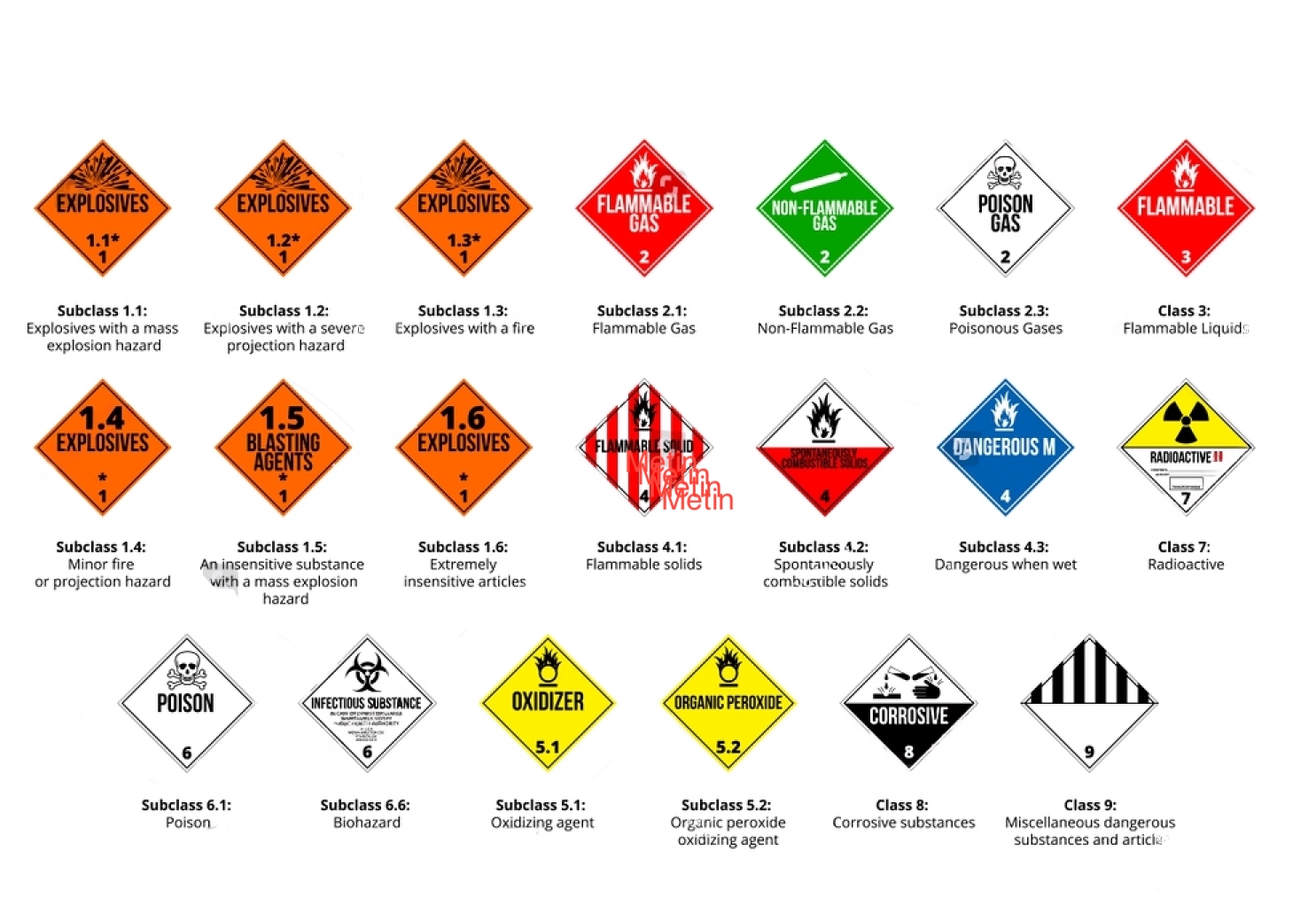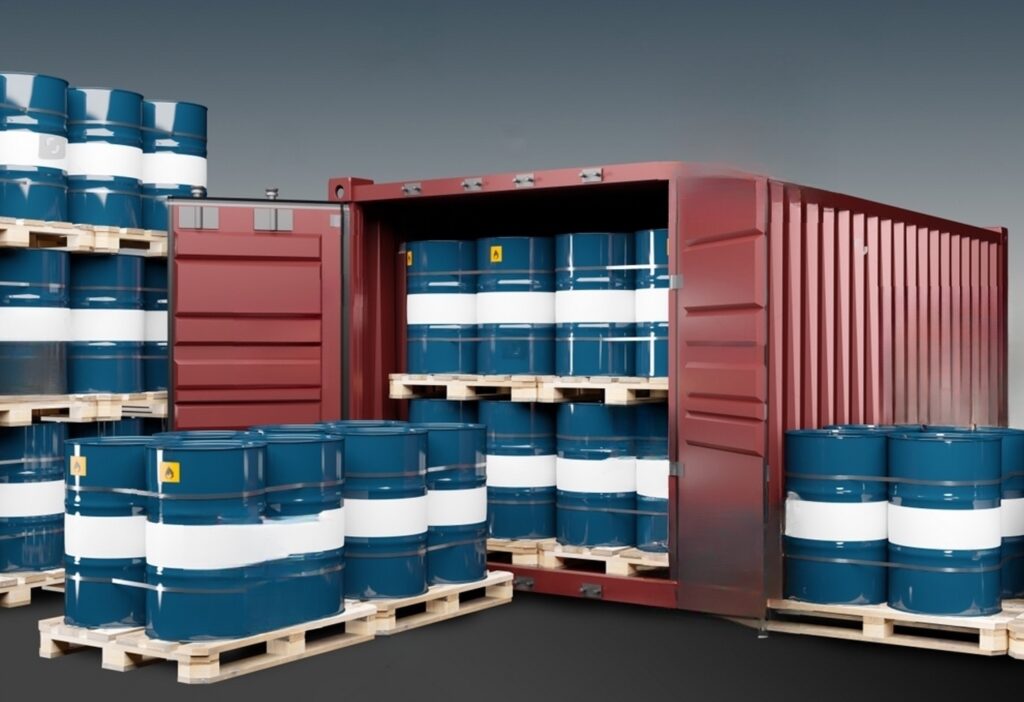
Hazardous materials are substances that have properties capable of harming human health, the environment, or material values. These substances can be explosive, flammable, toxic, radioactive, infectious, and many other types. Hazardous materials are generally used during processes in industry, agriculture, health, research, and defense. The harmful properties of hazardous materials depend on their physical, chemical, and biological characteristics. For example, explosives are flammable and sensitive to heat or impact. Toxic substances are harmful to human health and can come into contact with people through inhalation, skin contact, or ingestion.
During the transportation, storage, and use of hazardous materials, it is necessary to take proper precautions and implement the required safety measures. These measures help protect people and the environment and reduce the impacts of possible accidents or emergencies.
Hazardous material transportation codes are codes established by international standards and regulations used for the identification, classification, packaging, labeling, and transportation of hazardous materials. Below are some of the most commonly used hazardous material codes:
- UN Code: The UN Code, a numbering system determined by the United Nations, is a unique identification number for each hazardous material.
- ADR Code: This is a code system defined by the European Agreement concerning the International Carriage of Dangerous Goods by Road (ADR). These codes are used for the classification and identification of hazardous materials.
- IMDG Code: The International Maritime Dangerous Goods (IMDG) Code is a code system used for maritime transportation of hazardous materials.
- IATA Code: This is a code system established by the International Air Transport Association (IATA) and is used for air transportation of hazardous materials.
- RID Code: This is a code system defined by the European Agreement concerning the International Carriage of Dangerous Goods by Rail (RID) and is used for railway transportation of hazardous materials.
- HazMat Codes: This is a coding system used in the United States. These codes are used for the identification and classification of hazardous materials.
- GHS Codes: This is a globally harmonized coding system developed by the United Nations. These codes are used for the classification, labeling, and packaging of hazardous materials.
- NFPA Codes: Developed by the National Fire Protection Association (NFPA) in the USA. These codes are used to identify fire-related risks of hazardous materials.
- HAZCHEM Codes: This is a coding system used in Australia. These codes are used for the classification and labeling of hazardous materials.
These hazardous material code systems are extremely important for the safe transportation of hazardous materials and for taking correct precautions during transport. During transportation operations, these codes determine the properties of hazardous materials and help establish conditions for transportation and storage. Hazardous material transportation codes are used both during transportation operations and in storage processes. Using the correct codes in the classification, packaging, labeling, and marking of hazardous materials is crucial for complying with international standards and regulations.
Hazardous material transportation codes are also important for emergency management. For example, in the event of an accident or hazardous material leak, emergency response teams can accurately identify the affected substance and select the appropriate equipment and protective gear. Additionally, fulfilling safety requirements such as packaging, marking, and labeling hazardous materials during transportation is vital to ensure the safety of workers and the public during hazardous material transport.
Hazardous material transportation codes provide a standard language in the international transportation sector and ensure that hazardous material transportation operations are carried out safely and effectively.

Hazardous Material Transportation
Hazardous material transportation involves the movement of substances that could harm human health and the environment. These substances can be explosive, flammable, toxic, radioactive, infectious, and many other types. Hazardous material transportation also involves the use of hazardous material codes.
Hazardous material transportation is subject to specific rules and regulations to ensure the safe movement of hazardous materials. These rules include detailed information about carriers, vehicles used during transportation, and transportation methods. They also cover procedures to follow in case of an accident or emergency during transportation.
Hazardous material transportation applies to many different modes such as air, road, rail, and sea. Carriers must be very careful during transportation and take all necessary precautions to ensure the safe movement of these materials.
Hazardous Material Classes
Hazardous material classes are a classification system used to identify risks that may arise during the transportation, storage, processing, and use of hazardous materials and substances. This classification helps identify threats to human health and the environment and ensures appropriate precautions are taken.
- Explosive materials: Explosive materials are substances that can explode spontaneously or can be triggered to explode by heat, friction, impact, or other stimuli. These are usually chemical explosives or explosive devices. Special precautions are required during their transportation.
- Gases: Gases are compressed, cooled, or liquefied substances that are heavier or lighter than air. These can be classified as dangerous gases, flammable gases, or toxic gases. Transporting these requires proper packaging, labeling, and protective equipment.
- Flammable liquids: Flammable liquids are substances that can ignite due to open flames or sparks. Their flash points and ignition points are determined, and appropriate precautions must be taken during transportation.
- Flammable solids: Flammable solids are solid substances that can easily ignite with fire or other stimuli. These can be classified as flammable powders, flammable fibers, or flammable materials.
- Flammable oxidizers: Flammable oxidizers are substances that release oxygen upon contact with flammable materials. Special precautions are necessary during their transportation.
- Toxic substances: Toxic substances are chemicals, biological, or radiological materials that can be harmful to human health. These can be classified as toxic gases, toxic liquids, or toxic solids.
- Radioactive materials: Radioactive materials are substances that emit radiation. They can be classified as high-level or low-level radioactive materials.
- Corrosive substances: Corrosive substances are materials that can cause damage to the environment or materials. They require very careful handling.
- Other hazardous materials: Other substances that do not fall into the above classes but pose a danger.
Precautions When Transporting Hazardous Materials
Hazardous material transportation, if not performed correctly, can lead to serious risks. Therefore, some important considerations during transportation are:
- Compliance with laws: Hazardous material transportation must be carried out in accordance with your country's laws. It is important to have knowledge of transportation regulations and laws.
- Hazardous material classes: Hazardous materials should be transported according to their classification. This provides information about what type of container to use, vehicle requirements, and other precautions.
- Proper packaging: Hazardous materials should be transported using appropriate packaging techniques. This prevents damage to the material or reactions with other substances.
- Proper markings: The transport vehicle should have appropriate labels, signs, and other informative markings. This allows other drivers and cargo personnel to recognize that hazardous materials are being transported.
- Authorized personnel: Hazardous material transportation should be carried out by trained and authorized personnel. Drivers and cargo staff must be knowledgeable about transporting hazardous materials.
- Emergency plans: In case of an emergency during the transportation of hazardous materials, emergency plans should be prepared. This ensures the safety of cargo personnel and other drivers.
- Proper equipment: Suitable equipment must be used for hazardous material transportation. For example, the transport vehicle should have an appropriately rated fire extinguisher.
- Appropriate speed: The transport vehicle should travel at a suitable speed during hazardous material transportation. This reduces the risk of losing control of the vehicle and creating danger for other drivers.
- Since hazardous material transportation carries serious risks, paying attention to these matters is vital.
Therefore


